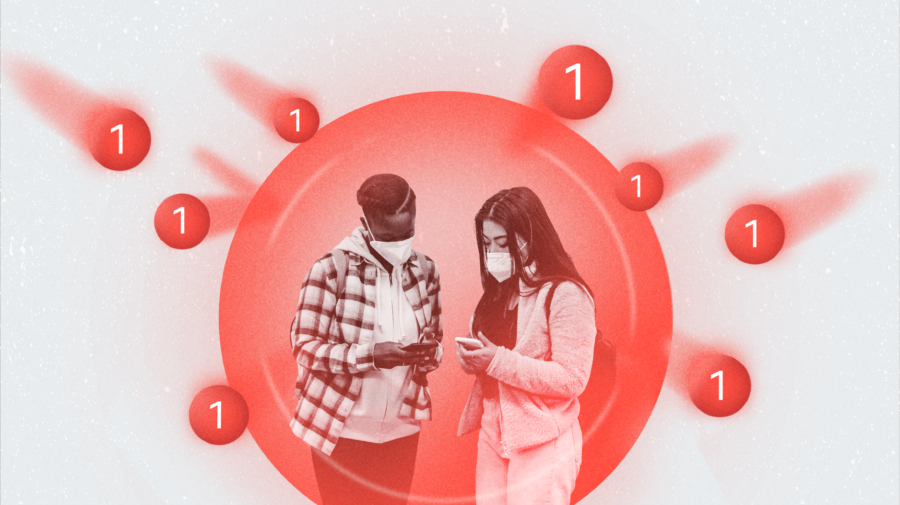More than a month after the storming of the US Capitol, journalists covering white supremacy as a beat are still grappling with questions about how to report on the growing threat of far-right extremists and the disinformation they spread. In 2020 alone, intelligence and security agencies in the US, Australia and the UK — to name a few — all sounded the alarm on violent far-right extremism, highlighting the issue’s increasing urgency.
While the reasons for the rise of extremism in recent years are complex, one issue First Draft and other organizations have identified is that established media outlets have sometimes inadvertently amplified extremist ideologies. Some may have thought that shining a light on extremism will help drive it away. However, reportage on extremists can also provide them with opportunities to game the media into repeating falsehoods. We saw this happen during the Christchurch terror attack; media amplification also helped propel QAnon conspiracy theories and election disinformation offered by the Trump administration far beyond their original audiences.
For journalists, researchers and editors, whether and how you cover extremism are important choices. We’ve compiled a reading list to help you make those decisions.
The role of journalism in covering extremism
If you’re looking for a one-stop shop for core tips and ideas, read Whitney Phillips’ The Oxygen of Amplification, which explains how reportage on bigoted and problematic information can exacerbate the issue of extremism. Phillips’s report, and the readings below, propose best practices for how journalists can protect the broader information and media ecosystems.
- Whitney Phillips, The Oxygen of Amplification, Data & Society
- Denise-Marie Ordway, 10 tips for covering white supremacy and far-right extremists, Journalist’s Resource
- Erin Corbett and Elizabeth King, Study Hall’s Antifascist Media Guide, Study Hall
- Isaac Alter, Covering extremism in the digital era: A Q&A with Joel Christopher, Center for Journalism Ethics
- Center for Media Risk, Reporting White Supremacy: The State of the Beat
- Jason Baumgartner, Fernando Bermejo, Emily Ndulue, Ethan Zuckerman and Joan Donovan, What we learned from analyzing thousands of stories on the Christchurch shooting, Columbia Journalism Review
- Lois Beckett, How leftwing media focus on far-right groups is helping to normalize hate, The Guardian
- Gaby Del Valle, How should the alt-right be covered? The Outline
- Jim Malo, Interviewing The Far-Right Is Bad, So Why Do Journalists Keep Doing It? Junkee
Understanding extremists’ online tactics
To understand the digital tactics and strategies commonly used by extremists, it’s instructive to examine Gamergate, a 2014 online harassment campaign in the video game industry that opened the floodgates for the current culture of extremist rhetoric and harassment influencers. The New York Times’s Everything Is Gamergate offers a five-year retrospective on the campaign and its impact on the internet.
- The New York Times, Everything Is Gamergate
- Ashley Feinberg, This Is The Daily Stormer’s Playbook, Huffington Post
- Joseph Bernstein, The Trump Internet Keeps Making Fake Hate Symbols, And People Keep Falling For It, Buzzfeed
- Shawn Musgrave, How white nationalists fooled the media about Florida shooter, Politico
- Joan Donovan, How an overload of riot porn is driving conflict in the streets, MIT Technology Review
- Joan Donovan, How memes got weaponized: A short history, MIT Technology Review
Covering extremism without centering extremists
If you do choose to write about extremists, remember that it does not have to involve profiling individuals or groups, let alone publishing direct quotes from them. Rather, consider other angles, such as reporting on the financial incentives behind those ideologies. In Columbia Journalism Review’s feature Reporting on extremism, from those who have done it best, Ijeoma Oluo advised journalists to “flip the perspective” and cover the people affected by these figures: “When your only goal is to understand the dehumanizing, and not understanding the impact that this is having on the people who are being dehumanized, you’re continuing that cycle of dehumanization.”
- Pete Vernon, Reporting on extremism, from those who have done it best, Columbia Journalism Review
- Dana Coester, View from Appalachia: Covering White Supremacy and White Nationalism, Nieman Reports
The ‘view from nowhere’ and leaving neutrality behind
Established media and legacy journalism sometimes fall back on what Phillips identifies as “both sides-ism” — pitting opposing views against each other and thereby equalizing them, even if one side doesn’t have the facts and isn’t worth reporting on. Three years ago, the BBC dropped the practice when it came to climate change, circulating a briefing note that said reports did not need a climate science denier to balance the debate. These readings discuss the limitations of a “view from nowhere” and the question of “neutrality” and “objectivity” in the current political moment.
- Lewis Wallace, Objectivity is dead, and I’m okay with it, Medium
- Wesley Lowery, A Reckoning Over Objectivity, Led by Black Journalists, New York Times
- Rebecca Solnit, To Break the Story, You Must Break the Status Quo
- Jay Rosen, The View from Nowhere: Questions and Answers
Keeping yourself safe
Finally, journalists and researchers should be aware they can face threats as a result of their work on extremist communities. There may be additional risks for reporters of color, women or queer journalists. Explore these readings for more risk assessment and digital security tips.
- Avi Asher-Schapiro, Journalists covering US white supremacists must weigh risks to selves and families, Committee to Protect Journalists
- Esther Chan, How journalists can keep safe and connected in a crisis, First Draft
- April Glaser, 13 Security Tips for Journalists Covering Hate Online, The Media Manipulation Casebook
- First Draft, Questions to consider before joining a platform
Stay up to date with First Draft’s work by becoming a subscriber and following us on Facebook and Twitter.









